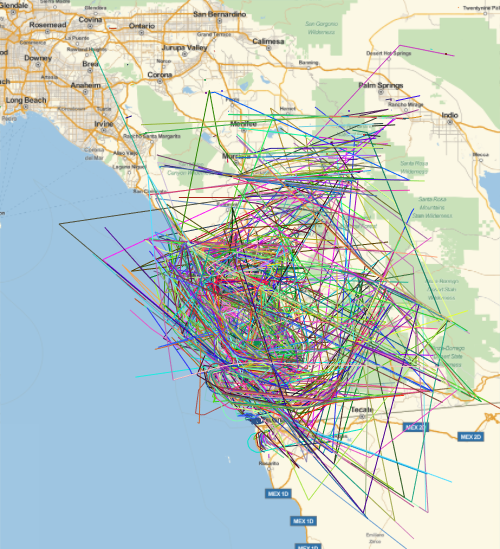Tracking Local Airplanes with an SDR and dump1090

Hi, I spent the last day or so collecting data and visualizing it with Mathematica. The data was collected using a nooelec SDR and the open source software dump1090. I had initially thought this wasn't possible because this particular model of SDR has a dead spot near 1090 MHz where the signal is received. Nonetheless, the SDR is capable of receiving aircraft transponder data when fitted with a pcb digital antenna. Since San Diego is home to several airports I expected a lot of commercial air traffic, however to my surprise I was able to receive signals all the way up from Palm Springs. Over the course of the collection period I accumulated ~139 MB of data. Before we get to how I visualized the results lets look at the software and methods utilized to collect the data: dump1090 can be found here: https://github.com/antirez/dump1090 by executing $ ./dump1090 --aggressive --interactive --net --net-http-port 10900 --net-sbs-port 30003 we start a server that gives...




